Universal Basic Income Is Not An Economic Savior Tyler Durden Fri, 07/31/2020 - 20:05
Authored by Lance Roberts via RealInvestmentAdvice.com,
According to a new study by the left-leaning Roosevelt Institute, a universal basic income could permanently make U.S. economy trillions of dollars larger. While such socialistic policies sound great in theory, history, and data, show it isn’t the economic savior it is touted to be.
What Is A Universal Basic Income (UBI)
To understand why the theory of universal basic incomes (UBI) is heavily flawed, we need to understand what UBI is.
“Basic income, also called universal basic income (UBI), is a public governmental program for a periodic payment delivered to all citizens of a given population without a means test or work requirement. Basic income can be implemented nationally, regionally, or locally, and is an unconditional income sufficient to meet a person’s basic needs (i.e., at or above the poverty line).“
The idea of guaranteed income is not a new thing. According to Wikipedia:
“The concept of a state-run basic income dates back to the early 16th century when Sir Thomas More’s “Utopia” depicted a society where every person receives a guaranteed income.
In the late 18th century, English radical Thomas Spence, and American revolutionary Thomas Paine, declared their support for a welfare system that guaranteed an assured basic income. Nineteenth-century debate on basic income was limited, but during the early part of the 20th century, a basic income called a “state bonus” was widely discussed.
In 1946, the United Kingdom implemented unconditional family allowances for every family’s second and subsequent children. In the 1960s and 1970s, the United States and Canada conducted several experiments with negative income taxation, a related welfare system. From the 1980s and onward, the debate in Europe took off more broadly, and since then, it has expanded to many countries around the world. “
While the idea of a UBI sounds good in theory, as discussed previously, they fail to work in reality.
UBI Won’t Increase Economic Growth
“More money in people’s pockets will lead to stronger economic growth.” – J.M. Keynes
Such is the underlying sentiment behind a universal basic income and its impact on economic growth. Unfortunately, it simply isn’t true.
Let’s run a hypothetical example using GDP from 2007 to the present. (I am using estimates of -4.3% for 2020 GDP growth) In 2008, in response to the “Financial Crisis,” Congress passes a bill providing $1000/month ($12,000 annually) to 190 million families in the U.S.
The chart below shows the economy’s annual GDP growth trend assuming the entire UBI program shows up in economic growth. For those supporting programs like UBI, it certainly appears as if GDP is permanently elevated to a higher level.
When you look at the annual rate of change in economic growth, which is how we measure GDP for economic purposes, a different picture emerges. In 2008, when the $12,000 arrives at households, GDP spikes, printing a 17% growth rate versus the actual 1.81% rate.
However, beginning in 2009, the benefit disappears. The reason is that after UBI is injected into the system, the economy normalizes to the new level after the first year. Also, notice that GDP grows at a slightly slower rate as dollar changes to GDP at higher levels print a lower growth rate.
UBI’s Dark Side
Of course, the money to provide the $12,000 UBI benefit had to come from somewhere.
According to the Center On Budget & Policy Priorities, in 2019, roughly 75% of every tax dollar went to non-productive spending.
“In the fiscal year 2019, the Federal Government spent $4.4 trillion, amounting to 21 percent of the nation’s gross domestic product (GDP). Of that $4.4 trillion, federal revenues financed only $3.5 trillion. The remaining $984 billion came from debt issuance. As the chart below shows, three major areas of spending make up most of the budget.”
Think about that for a minute. In 2019, 75% of all expenditures went to social welfare and interest on the debt. Those payments required $3.3 Trillion of the $3.5 Trillion (or 95%) of the total revenue collected.
That was BEFORE the shutdown of the economy due to COVID-19. Given the subsequent decline in economic activity occurring this year, those numbers become markedly worse. Given this bit of data, all universal basic income payments would have had to come solely from debt.
The table below shows the increase in total Federal Debt adjusting for the annual UBI payment.
The chart below takes our hypothetical example and compares the impact of the additional debt on the Federal deficit from the implementation of UBI.
While the “theoretical models” assume that UBI will create enough economic growth and prosperity to “offset” the increase in debt, 40-years of history suggest otherwise.
UBI Won’t Increase Economic Growth
As discussed previously, there is a high correlation between debts, deficits, and economic prosperity.
“The relevance of debt growth versus economic growth is all too evident, as shown below. Since 1980, the overall increase in debt has surged to levels that currently usurp the entirety of economic growth. The growth in debt continues to divert more tax dollars away from productive investments into the service of debt and social welfare.”
However, simply looking at Federal debt levels is misleading.
It is the total debt that weighs on the economy.
Under the current economic situation, it currently requires nearly $4.00 of debt to create $1 of economic growth. However, if you added UBI into the equation, it would require roughly $5 per $1 of growth. (Unfortunately, at the current spending rate, the U.S. will be approaching the $5 mark by the end of 2020)
If you don’t understand the implications of debt on economic growth, let me rephrase the analysis for you.
For instance, in the 30-years from 1952 to 1982, the economy ran at a surplus. That surplus fostered rising economic prosperity in the U.S. which averaged roughly 8%.
Since 1980, the economic deficit has continued to erode economic prosperity. As shown, there has been no organic growth without increases in debt. Due to the need to increase debt to fund it, UBI would only succeed in exacerbating the situation.
The UBI Test Has Already Failed
The United States already has a semi-UBI plan. It is an effectively bankrupt system called “Social Security.”
The collapse in economic growth has resulted in a collapse in Federal Tax revenue needed to pay for the massive social welfare schemes in the U.S.
It now requires more than of 100% of tax receipts just to meet the mandatory spending of social welfare and interest on the debt. In other words, we are now going into debt more just to provide social assistance.
How bad is it?
Social Security will be insolvent and unable to pay the full value of promised benefits by 2035. Social Security’s costs will exceed its income by 2020, according to a new report published Monday by the program’s trustees.
At the end of 2018, Social Security was providing income to about 67 million Americans. About 47 million of them were over age 65, and the majority of the rest were disabled. If nothing changes, the Social Security Trust Fund will be fully depleted by 2035. If such occurs, the program will impose across-the-board cuts of 20 percent to all beneficiaries.”
Getting Worse
That report, dire in its warning already, was issued before the “Pandemic” and “economic shutdown.”
Meanwhile, demographics are blowing up the basic premise of the funding of Social Security. There were 2.8 workers for every Social Security recipient in 2017. That’s down from 3.3 in 2007, and that’s way down from the 5.1 workers per beneficiary that existed in 1960.
Furthermore, the two programs function mostly as a giant conveyor belt to transfer wealth from the young and relatively poor to the old and relatively rich. Such allows the average person (who now lives to be 78) more than a decade of taxpayer-funded retirement.
Welfare now makes up the highest percentage of disposable personal incomes in history despite record low unemployment, rising wage growth, and the longest economic expansion in U.S. history.
During the “Great Depression,” the economically devastated masses would form “breadlines.” Today, those “breadlines” form at the mailbox. Without government largesse, many individuals would be living on the street.
The chart above shows all the government “welfare” programs and current levels to date. The black line represents the sum of the underlying sub-components. Since the onset of the “pandemic,” both unemployment insurance and “other benefits” have surged by $3 trillion. Those increases are in excess of the continued increases in all other benefits, like social security, Medicaid, and Veterans’ benefits.
Importantly, for the average person, these social benefits are critical to their survival. Government assistance now makes up ~38% of real disposable personal incomes. With more than 1/3rd of incomes dependent on Federal assistance, it should not be surprising the economy continues to struggle. Recycled tax dollars used for consumptive purposes, has virtually no impact on increasing economic activity.
Conclusion
In its essential framework, a universal basic income sounds excellent. Everyone has their basic needs covered. Then they can go out and produce and not worry about covering critical bills. In reality, the additional income is quickly absorbed into the economy as prices rise (inflation) to compensate for the extra spending. After the first year, the UBI has to be increased or no longer has any benefit.
Therein lies the trap with all socialistic programs.
While UBI, along with free healthcare, education, childcare, etc., sounds great, they are NOT productive investments that have a higher return than the carrying cost of the debt. In actuality, history suggests these welfare supports have a negative multiplier effect in the economy.
Most telling is the inability of the current economists, who maintain our monetary and fiscal policies, to realize the problem of trying to “cure a debt problem with more debt.”
The Keynesian view that “more money in people’s pockets” will drive up consumer spending, with a boost to GDP being the result, has been wrong. It hasn’t happened in 40 years.
We fear that these socialistic programs, which promises “free everything” with no consequences, instead delivers inflation, generates further income inequality, and ultimately higher social instability and populism. Such has been the result in every other country which has run such programs of unbridled debts and deficits.
While UBI sounds excellent at the conversational level, so does “communism” and “socialism.” In practice, the outcomes have been vastly different than the theory.
As Dr. Woody Brock aptly argues:
“It is truly ‘American Gridlock’ as the real crisis lies between the choices of ‘austerity’ and continued government ‘largesse.’ One choice leads to long-term economic prosperity for all; the other doesn’t.”
Take your pick.
https://ift.tt/3180xFO
from ZeroHedge News https://ift.tt/3180xFO
via IFTTT


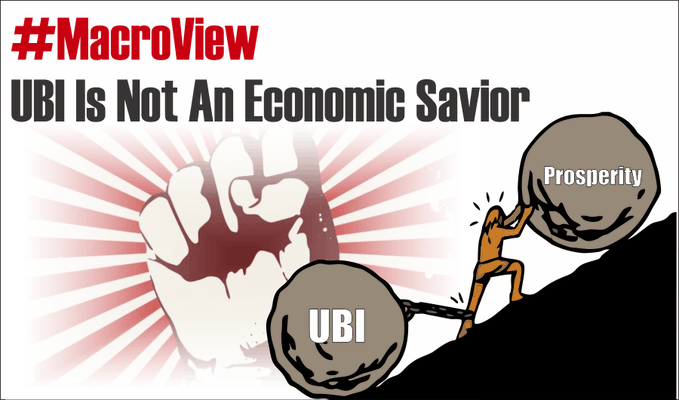
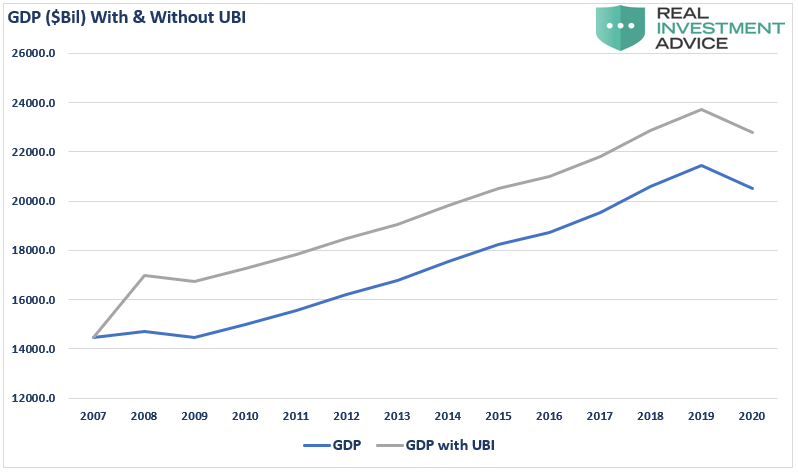
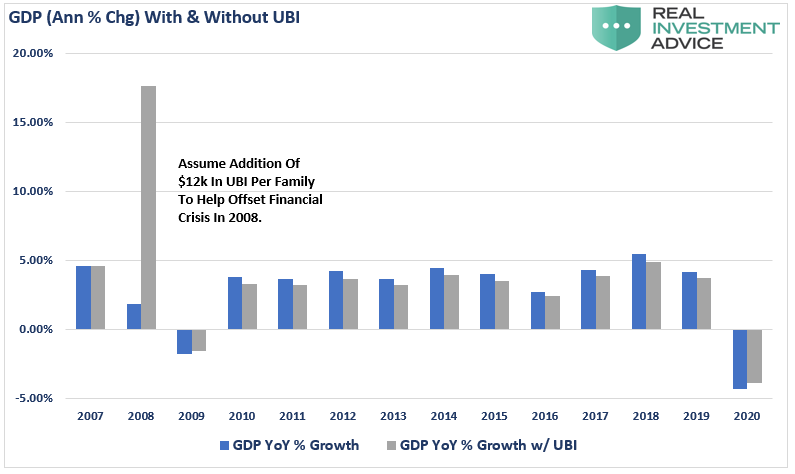
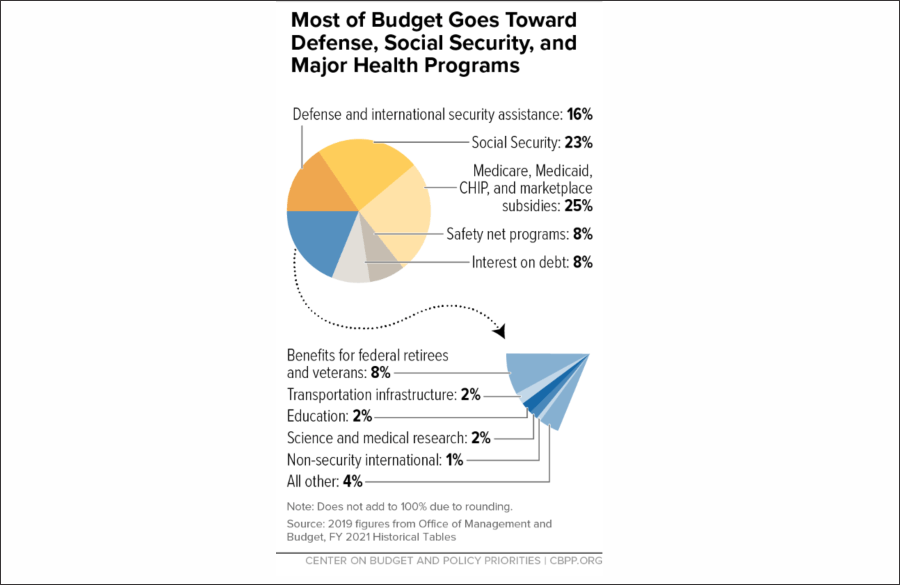
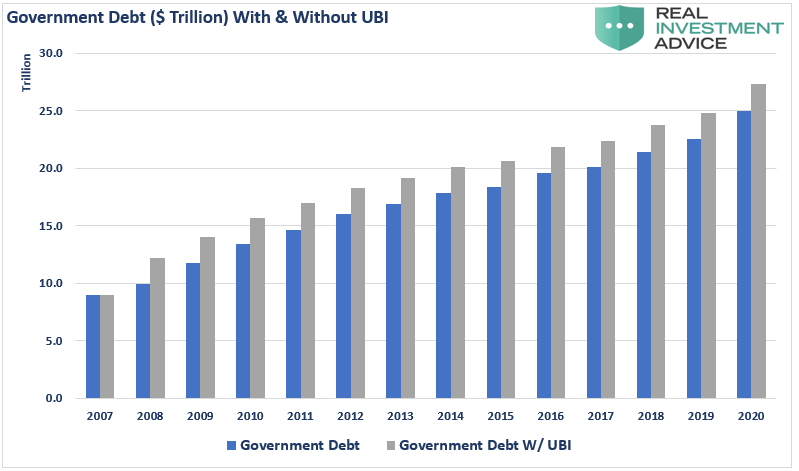
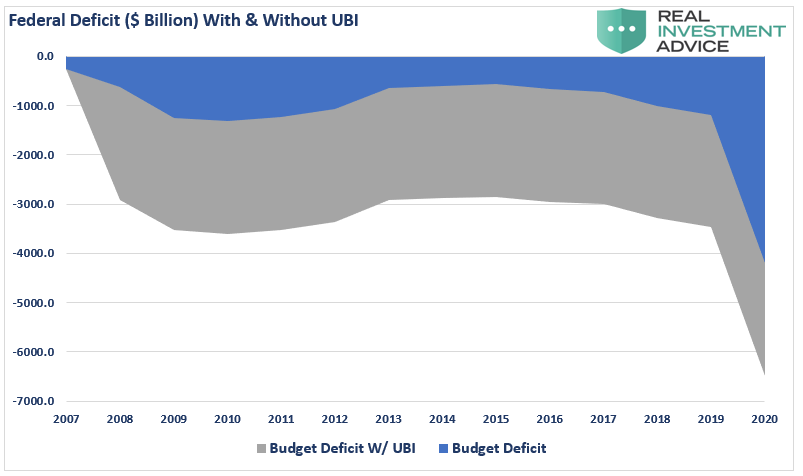
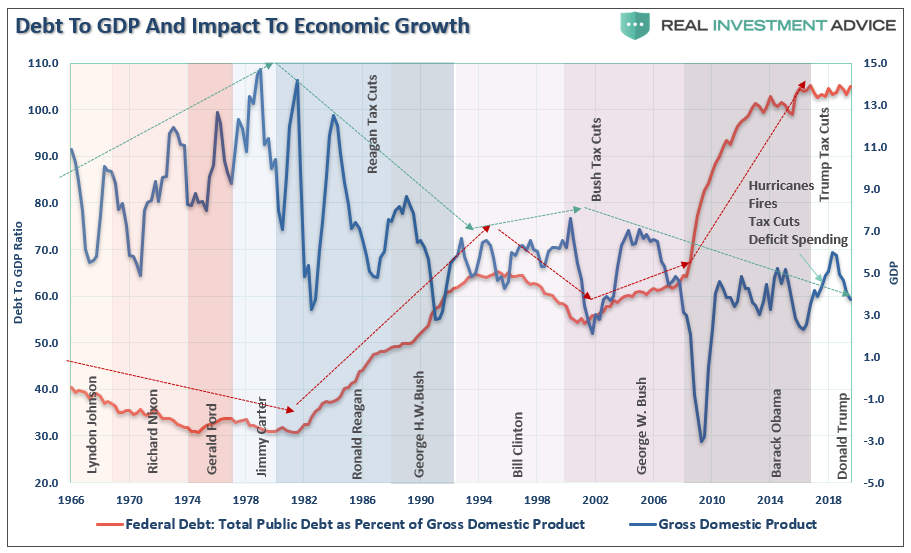
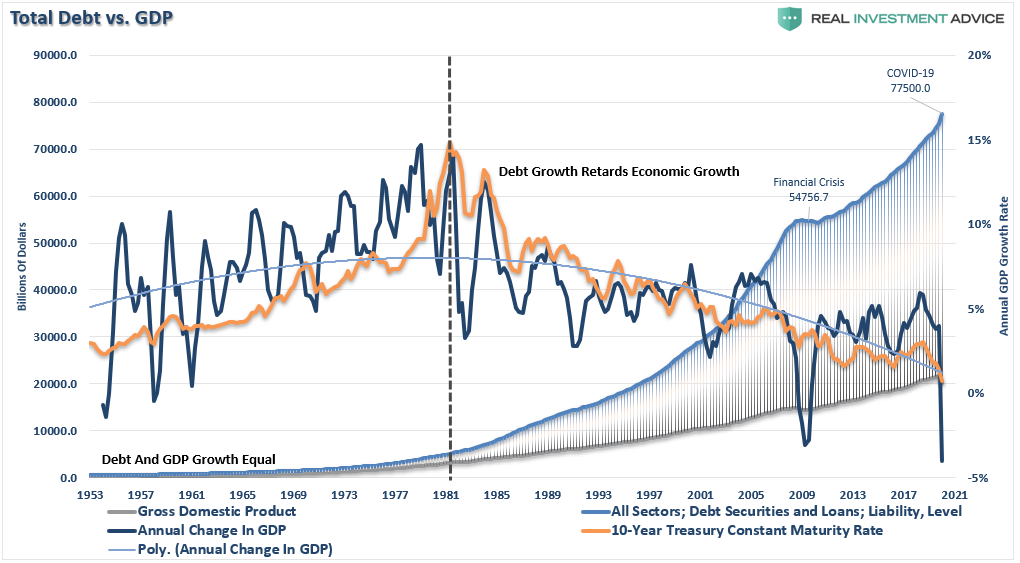
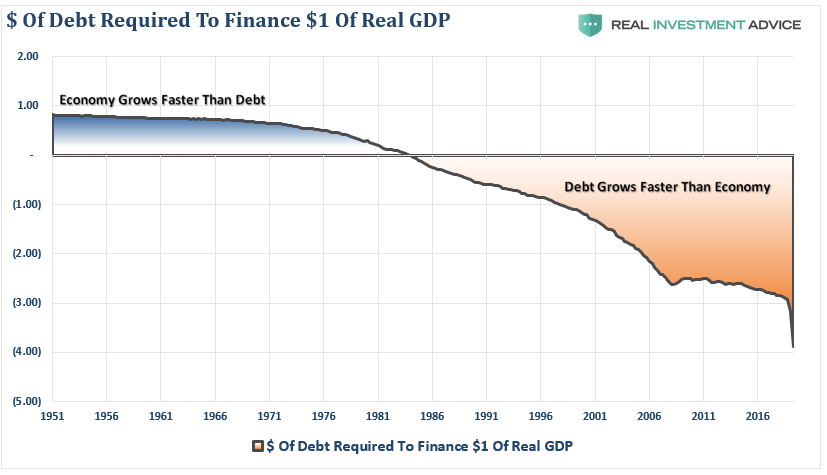
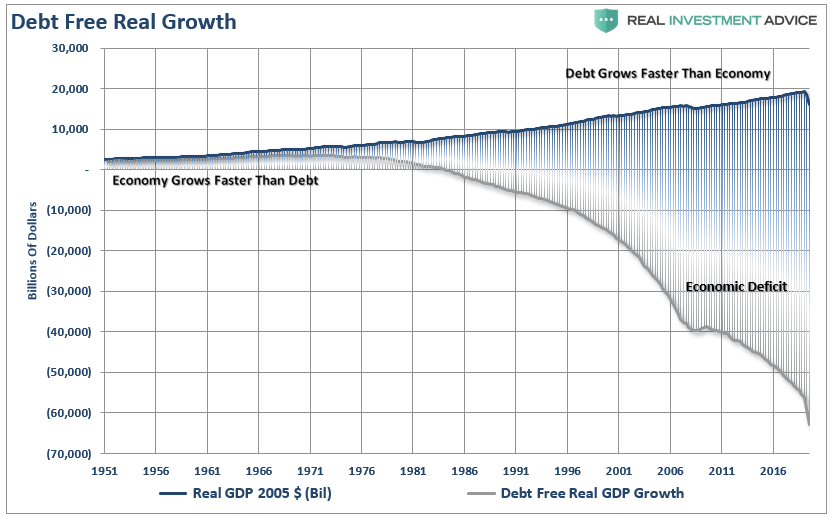
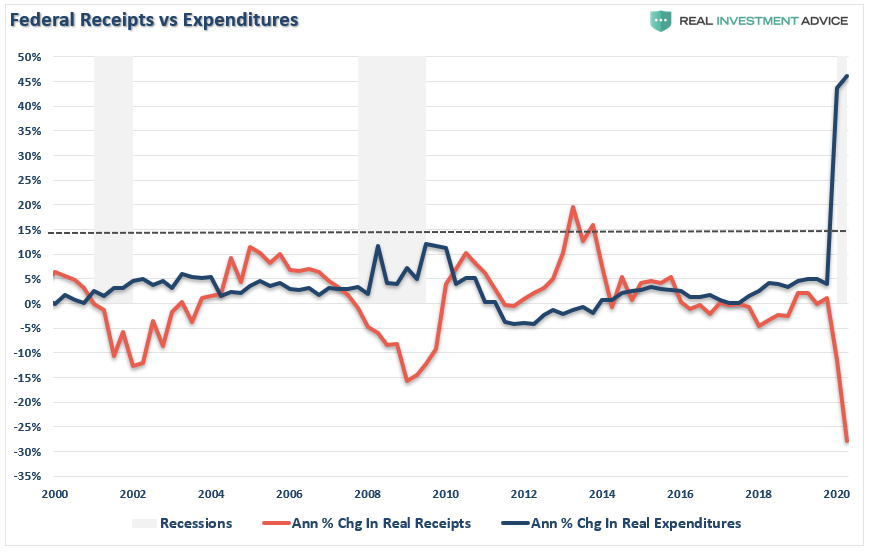
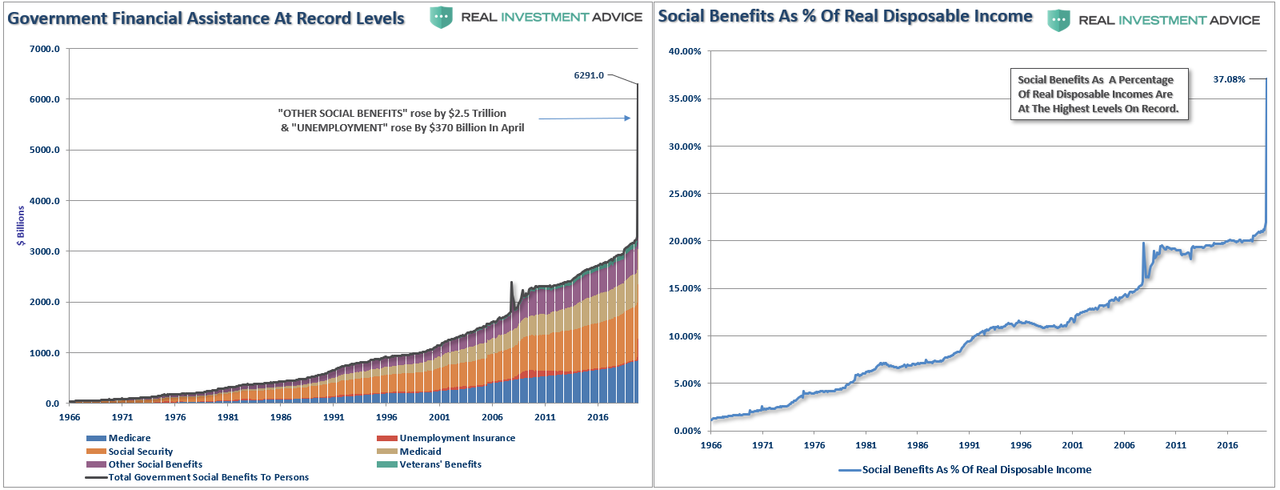


0 comments
Post a Comment